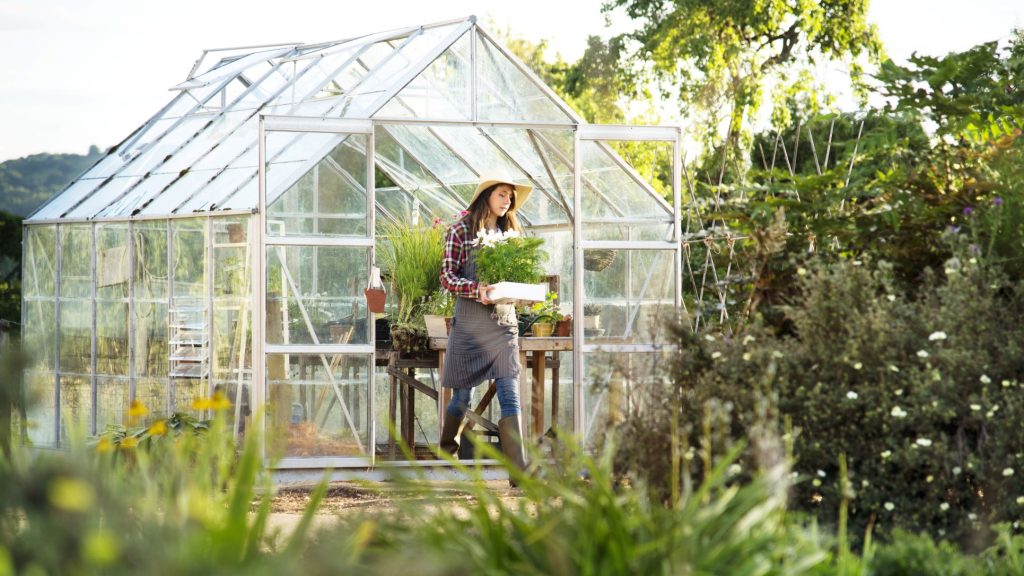How To Build A Greenhouse For Your Garden: Our Top Tips

Extreme weather conditions and pest infestation pose a massive threat to the growth of garden plants. It becomes unbearable for crops to develop during the cold winter if left in the open entirely. Seasonal pests like locusts, swarms, and caterpillars can also infest the plants, stunting their growth.
While many people know that a potting shed solves all these problems, they are set back on the know-how of building one from scratch. What materials should you purchase and factors to consider? Here is a detailed guide to building a greenhouse for your garden.
Choose Good Location
The first step in building a greenhouse is choosing the correct location. You should use a flat surface, either a concrete foundation or grass. However, do not place the greenhouse on concrete blocks- this weakens it and will produce a vulnerable house.
Asides from that, ensure to prioritize sunlight when searching for the best greenhouse location. To offer your plants a warm, bright environment, you must position them near sunlight. Ideally, a greenhouse should face south or southeast to take advantage of the morning sun. In most climates, an east-facing orientation is the best choice.
In addition, look for a place with easy access to power. Heating and ventilation are necessary for most greenhouses to maintain the optimum temperature for plant growth. You can extend power from the house if the potting shed is closed.
Pick The Right Frame/Style
After choosing the best location for your plant shed, the next important step is to know the type you want. There are numerous greenhouse frames and styles for different purposes. Research the types and determine which will suit your planting demands and budget. There is the lean-to type which uses a wall as support. The Quonset also relies on walls, carries a domed shape and can support metals, while the rigid type requires construction from scratch.
Greenhouse frame materials are often wood or aluminium. Wood is excellent for houses ranging in size from small to medium, is less expensive, and is easier to use. Metal is more durable and resistant to water than wood, but it’s more costly. Because aluminium is lightweight, corrosion-resistant, and sturdy, it’s an excellent choice. Here’s how to build a greenhouse frame.
- Measure the location of the supports by stringing them along the ground. Puncture the ground with stakes.
- Strengthen it with rebar. For lean-tos and Quonsets, you can use rebar and non-toxic PVC or an alternative to reinforcing the frame.
- After you have pushed the supports into the ground, spread an even layer of gravel across the floor. Adding a layer of loose rock to the bottom of a greenhouse helps with drainage. If you need a foundation, it’s best to use concrete contractors.
- Closely adhere you’re covering to the frame. Bolting film to wood might be an option.
Buy The Right Greenhouse Covering
There are numerous options when it comes to the covering of your greenhouse; polyethene, polycarbonate sheets, and fibreglass.
Polyethene
The UV-stabilized polyethene sheets last longer, are environmentally friendly and cost less. It has UV protection to prevent excessive sun rays from destroying crops. However, changing the plastic film on the windows is a maintenance issue to tackle. The non-toxic LDPE plastic has a longer useful life than PET. Now and again, you’ll need to clean it. Furthermore, it is not as good as glass at retaining heat. You can use it on lean-tos, quonsets, and small stand-alone greenhouses.
Polycarbonate Sheets
Polycarbonate roofing sheets are another greenhouse covering option to consider. This thermoplastic polycarbonate sheet is UV-stabilized, has a high light transmission, and can withstand heat, snow, rain and all extreme temperature making it the ideal type for your greenhouse covering. Its ability to withstand force helps it bend around frames quickly, making it very durable.
To build a perfect greenhouse, you should purchase quality polycarbonate roofing sheets from reliable stores like ClearAmber Shop. They are an excellent polycarbonate sheet store that offers one of the best products you need to set up a durable greenhouse.
Fibreglass
If you’re creating a framed greenhouse, fibreglass can save you money on the roof because it’s lower in weight. However, fibreglass will lose its quality with time. Because of its higher cost and longer shelf life, acrylic is more popular because of its excellent translucence. You should opt for crystal-clear fibreglass or acrylic if possible.
Consider Ventilation
Crops need an optimal temperature to thrive and produce the best results. You need to choose the ideal greenhouse ventilation and shading style. For example, you can install fans in the plant shed’s corners to help circulate air. During the winter, the heaters should operate continuously to provide adequate warmth and optimal temperature for your garden crops.
Installing exhaust vents on the greenhouse’s roof is also an excellent option. Place them close to the top of the supports to ensure faster ventilation. Using an electric heater is another way to create the ideal planting temperature. You can use wood or an oil-based heater, but you must vent out of the room to ensure good air quality, as carbon dioxide poising is a significant threat in such a small place.




